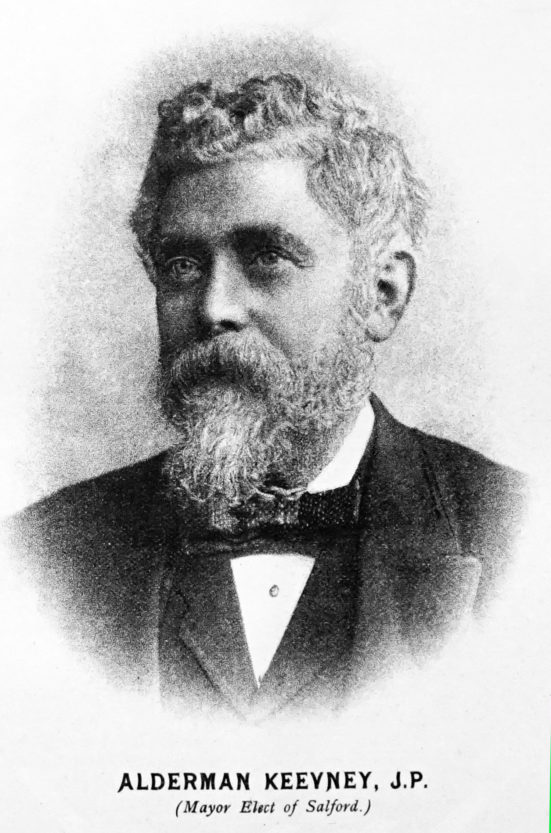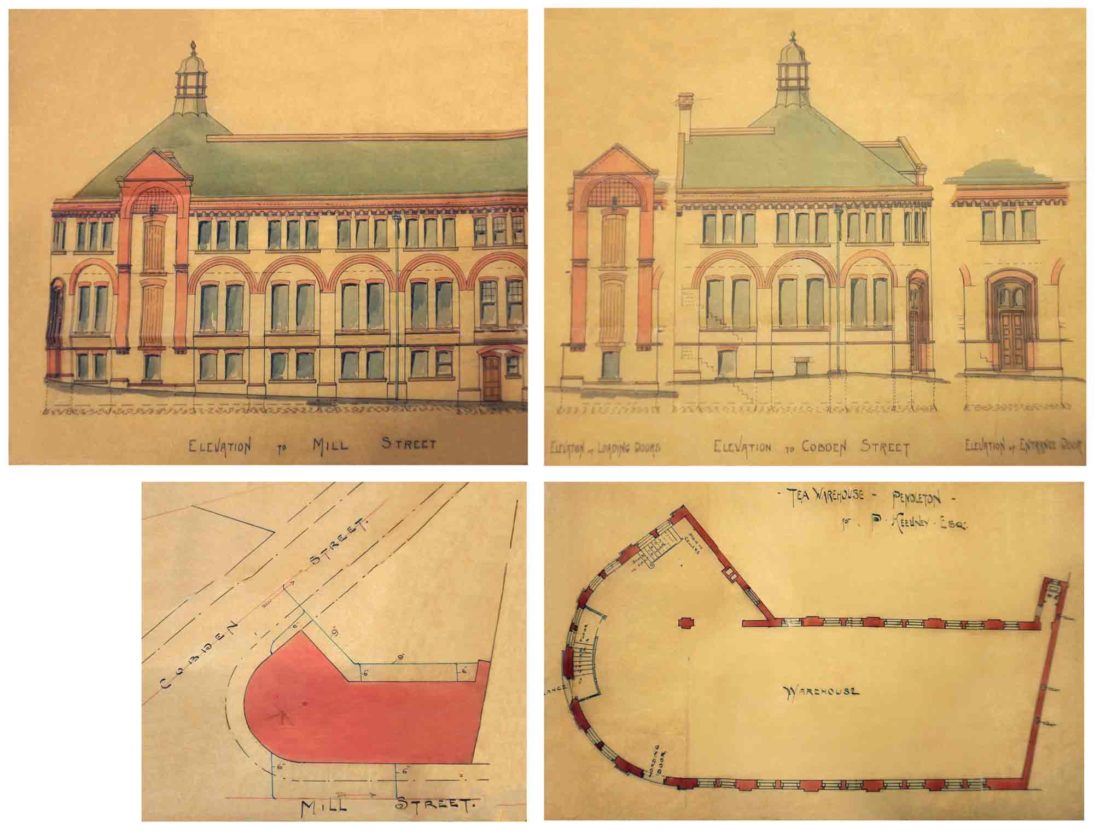Peter Keevney

Peter Keevney (1833-95) was a tea and coffee merchant and businessman. Conservative in politics, he became the Chair of the West Salford Conservative Association, served as a councillor for the St Thomas ward and was an Alderman and Mayor of Salford on two occasions. Born in Ireland the son of a farmer, Keevney was originally Roman Catholic later becoming a committed Wesleyan Methodist. Keevney was closely associated with the rebuilding of the imposing Brunswick Wesleyan Methodist church (1880) on Broad Street, the Wesleyan Chapel (1880) at Irlams o th Height and the Cheetham Hill Wesleyan Chapel where he was a benefactor. He took on a series of civic and business roles including serving as president of the Salford Ragged Schools, Ellor Street, opening the reading room at the former Pendleton Old Hall in Charlestown in 1895 and chairing the Manchester and District Tea Merchants Association.
In 1853 Keevney had settled in Farnworth, Bolton where he joined the tea business of H Duffy. Here he married Mary Jane Dearden, the daughter of a Farnworth cotton spinner. The Keevneys moved to Pendleton, initially living on Bolton Road and later at Grange Villas, 5 Eccles Old Road. Keevney set up his tea blending business, The North of England Tea Company on Broad Street with offices on Corporation Street, Manchester and in London. In 1885, as his business prospered, Keevney built a purpose built blending warehouse on Cobden Street, Pendleton to the designs of the architect, Henry Lord, a fellow Conservative councillor. A full description of this building, which still exists, was included in Manchester Faces and Places in 1891-

‘’this beautiful block of building is of red brick with a pleasing and substantial form of architecture. It was erected some ten years ago, is of gusset shape, with cart roads on either side, and occupies, with the outbuildings and yards, upwards of half an acre of ground. The front elevation being decidedly semi-circular, the building has a more imposing and thoroughly English air than it would otherwise have. It is four storeys high surmounted with a ventilating dome, which admits pure currents of air upon the suction pump principle. To the most casual observer it is evident that the proprietor of this building has no inconsiderable sanitary knowledge, and that in erecting it he had an eye to lofty, well-lighted rooms, in which the company’s teas would be properly stored and treated. The rooms being spacious, the windows are correspondingly large, hence through them penetrates a clear healthy flood of regulated light. This applies to the various storeys of the warehouse. The rooms are about 150 ft. long, 18 to 20 ft. high, and proportionately broad. The floors are supported by powerful wood and iron beams, and the ceilings are all double to prevent the falling of dust. We were delighted to notice that in this establishment order and tidiness prevail everywhere, and that the floors, machinery and utensils are kept scrupulously clean. The whole building is heated by a patent hot-water apparatus which keeps a pure, uniform temperature throughout the warehouse all the year round. At night the place is lighted with the celebrated Wenham lamps, which are unequalled in points of economy, intensity, purity and steadiness of light’.

The article goes on to describe the admirable working conditions of the female workforce but falls short of revealing the minutiae of the blending and mixing methods employed. Not surprisingly Keevney’s teas were imported from India, China and Ceylon.
Keevney and his wife had two daughters, Marian and Lizzie Maud, and a son, Robert William, who died aged twelve in 1877. Mary Jane died in 1887 at the age of 53. In 1895 Keevney died unexpectedly of pneumonia at Ash Lawn, Broughton and was interred at St Mark’s Worsley with his wife and son. Described in his obituary as genial, blunt and hearty he left £33,777.